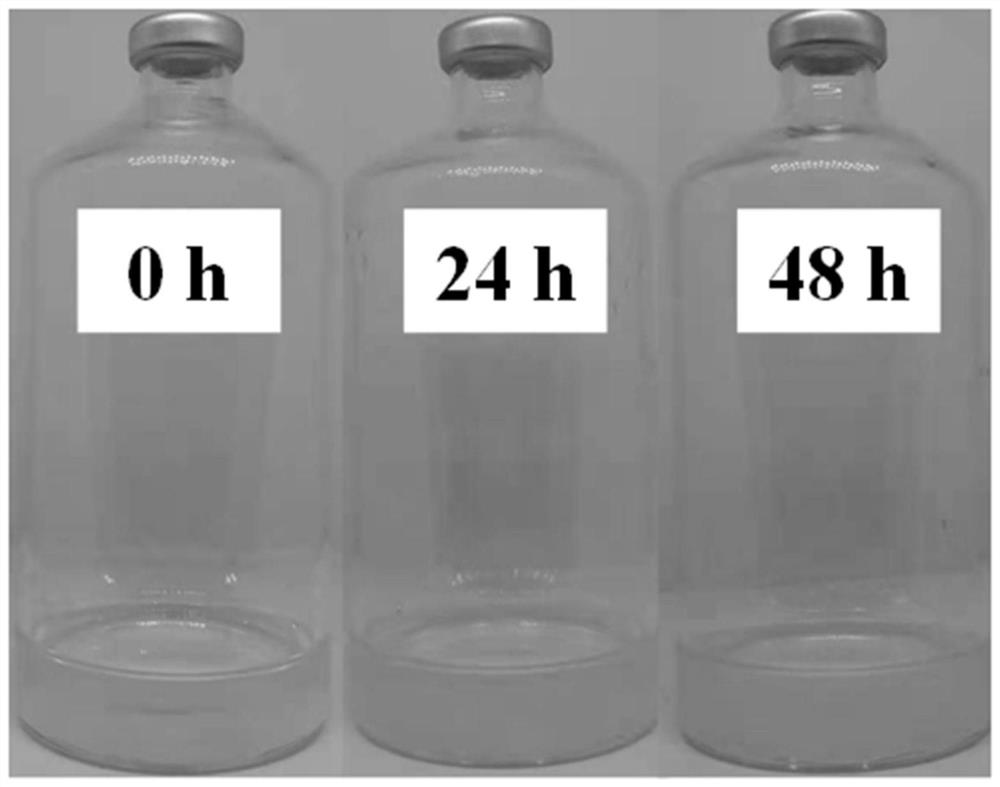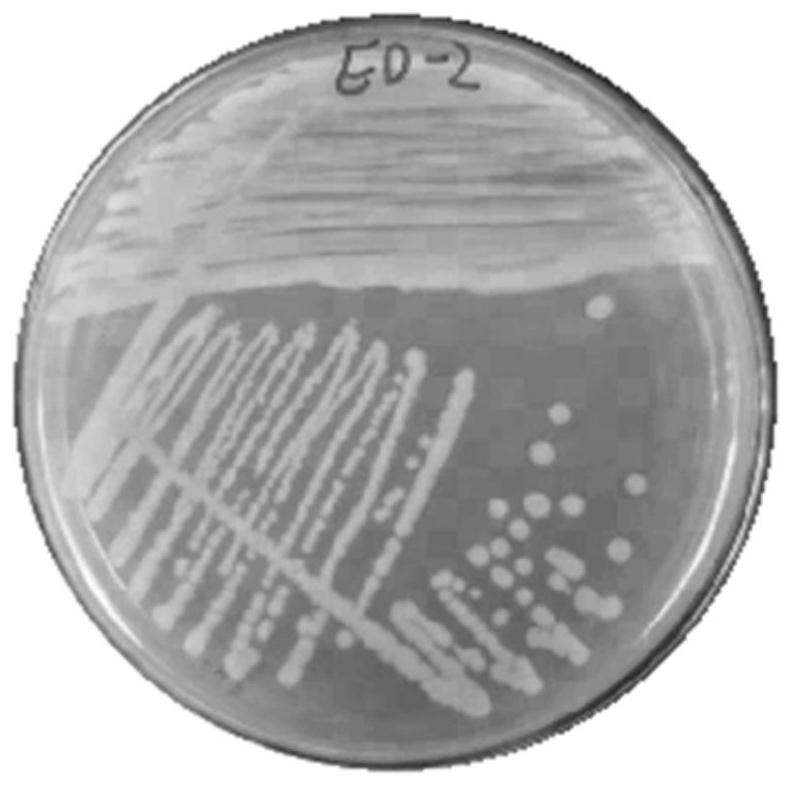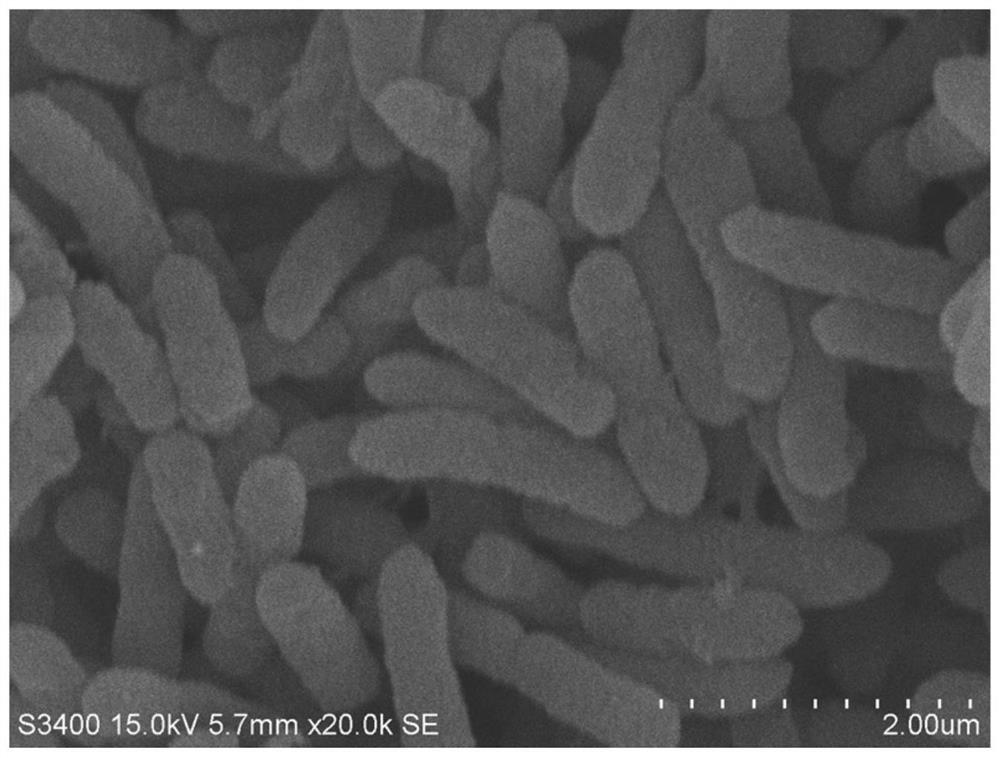Ethylbenzene degrading bacterium and screening method and application thereof
A screening method and technology for degrading bacteria, applied in chemical instruments and methods, microorganism-based methods, biochemical equipment and methods, etc., can solve the problems of insufficient removal of low-concentration benzene pollutants, high cost, secondary pollution, etc.
- Summary
- Abstract
- Description
- Claims
- Application Information
AI Technical Summary
Problems solved by technology
Method used
Image
Examples
Embodiment 1
[0052] Strain acquisition
[0053] Contaminated soil was collected from a pesticide factory in Bengbu, Anhui, packed in brown bottles and transported back to the laboratory. The soil was added to the culture medium to prepare a mixture. After screening and domestication, a strain of highly efficient ethylbenzene-degrading bacteria was obtained, and the strain was tested for benzene series. Degradation verification, found that the strain can efficiently degrade benzene, toluene and ethylbenzene, p-xylene also has a certain degradation effect, and the strain has stable passage characteristics.
[0054] Gram staining of the strain was negative, and the shape of the strain was non-capsulated and achromobacter. Colonies on Luria-Bertani medium plates were regular, yellow, slightly raised, opaque and smooth.
[0055] 16S rDNA sequencing was carried out on it, and the measured 16S rDNA sequences were compared by BLAST. The comparison results showed that the nucleotide sequence of th...
Embodiment 2
[0070] Study on Degradation Characteristics of Strains (Different Ethylbenzene Concentration, Temperature, pH, Yeast Powder Concentration)
[0071] ED-2 was expanded in Luria-Bertani medium, centrifuged at 8000r / min for 5min, and resuspended in 1% inorganic salt medium to wash away carbon sources such as yeast powder. After repeating twice, the total volume remained unchanged. Measure the absorbance value, and add it into a 150mL serum bottle, which contains 20mL of inorganic salt medium containing ethylbenzene, and degrade the initial OD in the system 600 Value 0.1. In order to prevent ethylbenzene volatilization, cover and seal, shake culture at 28°C, 180rpm, and avoid light. Change the ethylbenzene concentration, pH value, yeast powder concentration, and temperature respectively. After 48 hours, take a sample to measure the residual concentration of ethylbenzene.
[0072] Degradation characteristics results such as Figure 4 As shown, ED-2 can tolerate 300mg / L of ethylben...
Embodiment 3
[0074] Study on Degradation of BTEX in Wastewater by Bacteria
[0075] 20 mL of inorganic salt medium containing 50 mg / L BTEX (benzene, toluene, ethylbenzene, o-xylene, m / p-xylene) was placed in a 150 mL serum bottle, and the inoculation step was the same as in Example 1. In order to prevent the volatilization of benzene series, cover and seal, shake culture at 28°C, 180rpm, and avoid light, take samples regularly, and measure the residual concentration of BTEX.
[0076] Figure 8 It shows that ED-2 completely degrades 50mg / L ethylbenzene and toluene within 92 hours, 76% of benzene is degraded, 57% of m- and p-xylene is degraded, and 47% of o-xylene is degraded.
PUM
 Login to View More
Login to View More Abstract
Description
Claims
Application Information
 Login to View More
Login to View More - R&D Engineer
- R&D Manager
- IP Professional
- Industry Leading Data Capabilities
- Powerful AI technology
- Patent DNA Extraction
Browse by: Latest US Patents, China's latest patents, Technical Efficacy Thesaurus, Application Domain, Technology Topic, Popular Technical Reports.
© 2024 PatSnap. All rights reserved.Legal|Privacy policy|Modern Slavery Act Transparency Statement|Sitemap|About US| Contact US: help@patsnap.com










